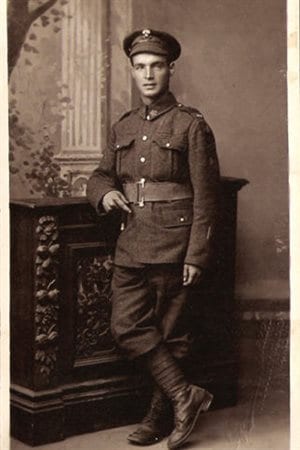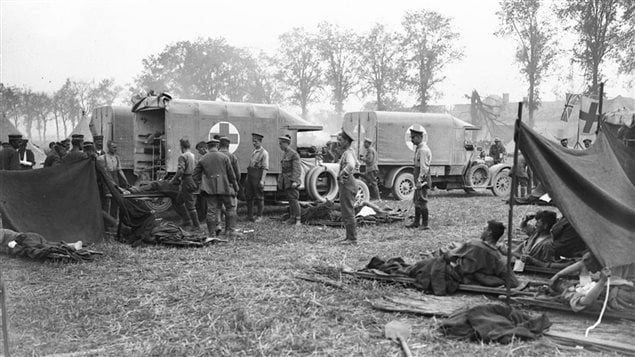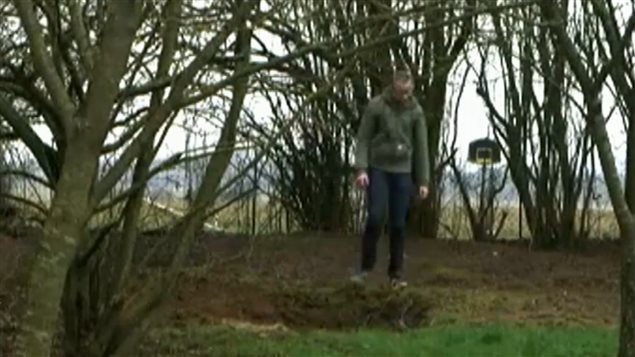
Sidney Halliday of the 78th Winnipeg Grenadiers was 22 when he was killed near Hallu, France during the Battle of Amiens in 1918.
His remains were found in 2006 by then 14-year-old Fabien Demeusere, and have finally been identified through love, where technology had failed.
The French teenager’s home had been built on the old battlefield about 120 kilometres north of Paris. Already interested in WWI history, he was digging in his back garden when he found some old shell casings near a shallow depression. Digging further he uncovered the remains of a Canadian soldier. Further investigation by officials of the Commonwealth War Graves Commission eventually revealed there were the remains of eight soldiers in the grave.
Four of them had finally been identified in September of this year through exhaustive research of records and DNA.
When he heard of the indentification of the four others, Jim Halliday, a relative in Manitoba asked if there was any jewelry found as he knew that Sidney and his girlfriend had exchanged tokens of their love before he left for the war. These were rings and lockets of each other’s hair. The ring and locket that Halliday had worn with him in battle eventually helped identify his remains.
A special internment ceremony to bury the soldiers with military honours alongside others of the 78th will take place at a cemetery in Caix France in May 2015.
More than 19,000 Canadian soldiers of the First World War still have no known grave.
“It is fitting that during the centenary of the First World War, we have the opportunity to afford these young soldiers the honour and respect owed to their sacrifice. The years of diligent research and scientific efforts undertaken to recognize our fallen represent the legacy of admiration and regard due to these soldiers, and our responsibility to provide them with the dignity they deserve.” James Bezan
Parliamentary Secretary to the Minister of National Defence”(on the occasion of announcing the identities of the four soldiers in September 2014

The epic battle begun on August 8th, 1918, the Canadians had advanced further than the other allies and captured thousands of prisoners and weapons. The 78th however ordered to take Hallu near the eastern edge found themselves surrounded and engaged in a desperate battle just to survive.
Although the successful battle of Amiens was the start of what has become known as Canada’s 100 days, in which Canadians were sent as the shock troops to win every battle to the end of the war, too many men of the 78th were lost on August 11, 1918.
- The four previously identified were:
- -Lt. Clifford Neelands, born in Barrie Ontario, moved to Winnipeg where he was a real-estate agent before joining the 78th Winnipeg Grenadiers.
- -Pte. Lachlan McKinnon grew up in Scotland, arriving in Canada in 1913. He had worked as a butcher.
- – Pte. William Simms was from a large farm family in Russell, Manitoba and had taken part in all the major Canadian offensives of 1917. A brother was also killed in the war
- – Lance Sgt John Oscar Lindell was born in Sweden and came to Canada when he was about 20 and ended up in Winnipeg. He worked as a railroad foreman before he joined the 78th battalion in 1915.







For reasons beyond our control, and for an undetermined period of time, our comment section is now closed. However, our social networks remain open to your contributions.